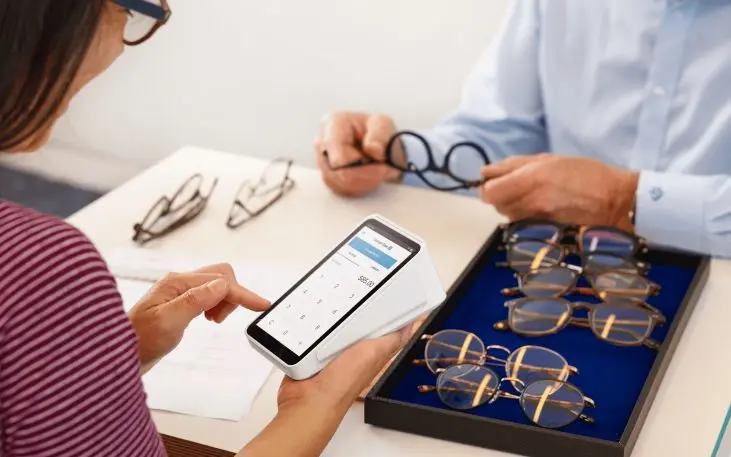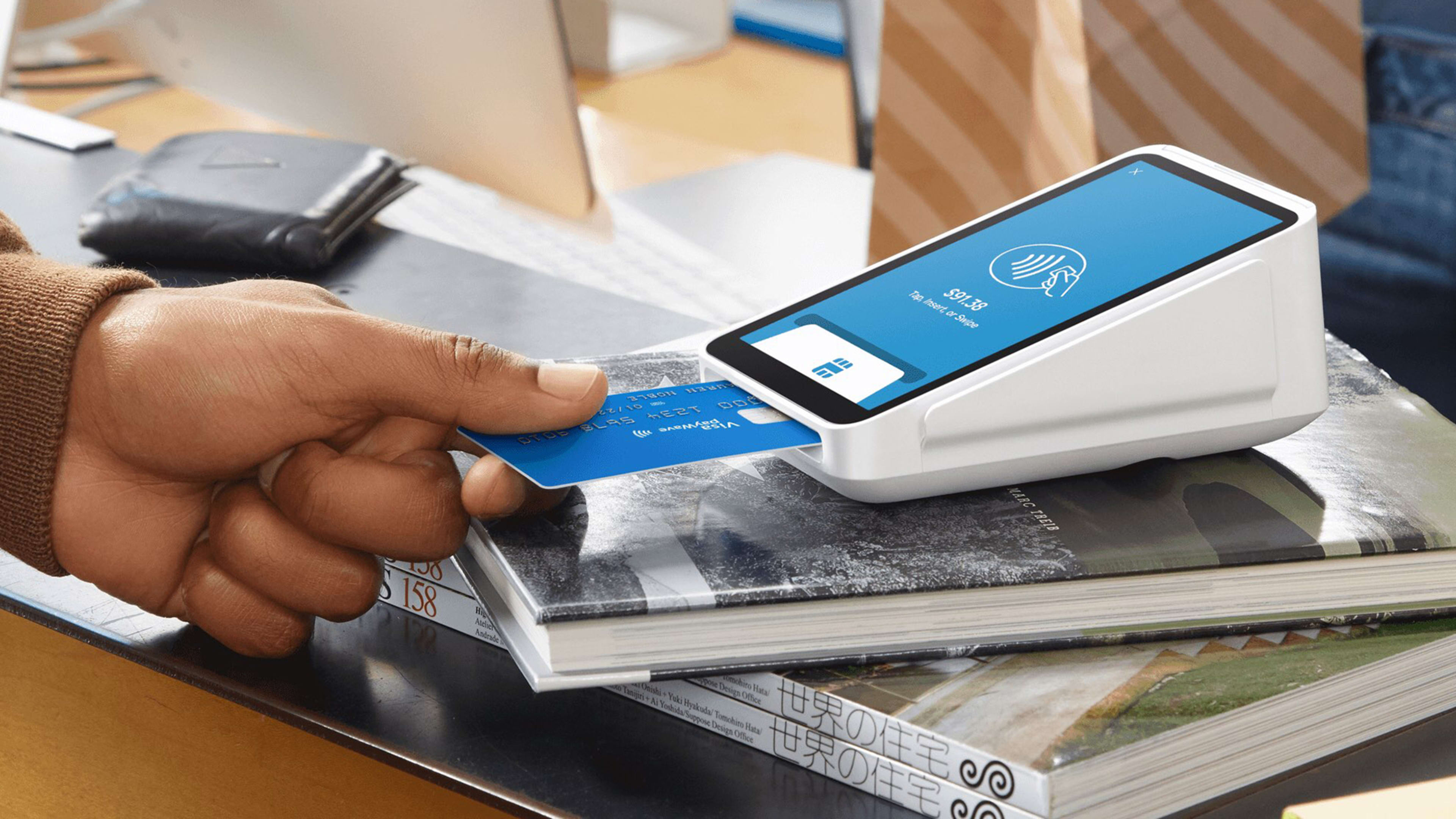With a few taps on the color touchscreen of Square’s new mobile payment terminal, the bike salesperson selects a BMX helmet and chain. Then he hands the terminal over to his bearded customer, who checks the total cost of the transaction and taps his Apple Watch to complete the sale.
Okay, full disclosure: We’re in a conference room at Square’s San Francisco headquarters; the “salesperson” is the company’s head of hardware, Jesse Dorogusker. And his “customer” is Jack Dorsey, the cofounder and CEO of both Square and its neighbor on the next block, Twitter. The two have been engaging in a little play-acting to demonstrate the new Square Terminal to me.
It was probably inevitable that the company–which has been on a roll–would get around to building something along these lines. “Payment terminals have been around for longer than Square has been around,” says Dorsey. “So it’s never not been on our mind. There are entire companies that just make these things.”
Square Terminal fills a distinctly different niche than Square’s existing hardware: Its tiny original smartphone reader, larger Bluetooth-enabled reader for chip cards and mobile payments, and big-screen Square Register. Unlike the readers, the terminal is an all-in-one gadget that doesn’t require a smartphone or tablet for brains and connectivity. And unlike Square Register, it’s ultraportable, designed for passing-around scenarios such as the one Dorogusker and Dorsey acted out. It sells for $399, with a $300 processing credit for new Square merchants, and is available starting today on Square’s website.
https://m.youtube.com/watch?feature=youtu.be&v=uEolqi_3IJg
Since Square’s 2009 launch, the company–and, once spurred to respond, its competitors–have done much to modernize the act of accepting credit cards. But the situation with payment terminals remains messy. Many of the terminals out there are clunky and outmoded, difficult to update with new capabilities, and provided to merchants as part of a payment-processing service agreement–assuming that a merchant gets approved, which is still not always the case with small businesses in 2018.
“Even if you do get accepted by a traditional terminal provider to accept payments, you typically sign up for a contract that is at best opaque and probably not so fair,” says Dorogusker. “There’s a teaser rate, there are monthly fees, there’s a variety of other fees, different cards cost different amounts.”
“Square Terminal is our way to fix basically all of those things,” he declares. Rather than sporting a plasticky keypad and a tiny display, the device has a 5.5″ color touchscreen which, along with its Android-based software, makes it feel like a smartphone embedded in an angled base sculpted out of Square’s signature white plastic. Customers can insert a chip cart into the front of the terminal, swipe a mag-stripe card along its right edge, or tap a smartphone or smartwatch to make a mobile payment. A built-in printer spits receipts out of the back, the battery is designed to last for a day on a charge, and Wi-Fi and Ethernet compatibility allow for both wireless and wired connections to the internet.

As with other methods of accepting Square payments, the company charges a flat rate of 2.6% plus 10¢ for Square Terminal transactions and doesn’t make anyone sign a contract. The goal is to get new users up, running, and back to operating their businesses within minutes. “It’s not even in the category of things they want to think about,” says Dorsey. “They want to think about things like like hiring people and introducing new ingredients.”
“We’ll probably be surprised at how people use it”
Square says that its new terminal will appeal to everyone “from dentists to bowling alleys.” Though the company has recently been successful getting larger companies to embrace its services and says there’s no upper limit to the sort of outfits that might use the terminal, small businesses are an obvious focus, including both ones upgrading from older terminals and those that are taking credit cards for the first time.
But Dorsey emphasizes that Square isn’t sure where the terminal will go, and that’s part of the point. “What’s exciting to me about it is that it kind of resonates back to when we first started the company and we built the reader,” he says. “We had some idea of who would use it, but really no idea how it would end up being used. This has very similar properties where we’ll probably be surprised at how people use it.”

With any luck, once merchants get the terminal in their hands they’ll instinctively figure out how to make it work for them. When I ask Dorsey about the new device’s competition, however, he returns to the theme that it’s a challenge to get small businesses to think about payments at all.
“The biggest thing we’re competing with, honestly, is that sellers tend to develop systems of doing things and it’s the adage of ‘If it’s not broke, don’t fix it,’ he says. “We experienced that when we first came on the scene, especially around the merchant account. And then they actually saw how broke it was in terms of how much extra they were paying and how much math they had to do just to understand that basic fact.”
Square may still be associated, above all, with its well-designed payments hardware. But along with its potential to expand Square’s payment-processing business, Square Terminal certainly looks like a good way for the company to find new prospects for its expanding range of offerings. According to Dorsey, each item in the portfolio helps buttress the others. And that does get busy owners of small businesses to pay attention.
“Our approach has been to not just stop at the device, but the connection to the broader ecosystem of tools,” he says. “We can handle your payroll, we can give you a loan, we can handle your appointments if you’re a salon, in addition to the walk-ins who come in to buy product and use [the terminal] to swipe a card. If we can tell a story that is bigger than one piece of hardware that is visible, then we tend to shift minds.”
Recognize your brand’s excellence by applying to this year’s Brands That Matter Awards before the early-rate deadline, May 3.
